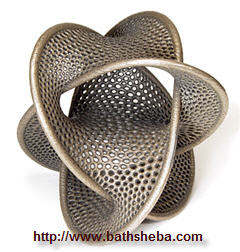I ask you your kind indulgence. I know this post has the word math in it. I do have pictures. This might not seem like an education post but it really is. It is about the creativity and the math skills we use everyday. There are women who use math and mathematics to create extraordinary works of art and function. Or both.
Pre-Ramble Flashback
In school I hugged a “D” grade in arithmetic. If I got a 68 on an arithmetic test I was doing good. I did not care nor was I made to care. Just another dumb old girl who couldn’t do math. You know something? It wasn’t true. I could do math. I could figure out how many recycled soda bottles it would take to buy a Chunky bar. I knew how long I had to stay away from home on a hot day after going into a gushing fire hydrant when my mother told me I wasn’t supposed to be anywhere near the open fire hydrant. I could work out how many comic books could I get with 55 cents depending on if I bought the 12 cent full cover or the 5 cent stripped covers.
Like I said, the essentials of life I could master. What I could not do was understand the half assed way it was presented to me in my classes. Not to mention the not so hidden message of what would I need it for anyway? I say let us cast off the shackles of culturally enforced math shame!
Women deal with numbers, ratios, geometry and mathematical skills every day. We can do it, have been doing it and so long as there is a woman in a grocery store four days from payday who has to feed 5 people on her remaining $10 dollars we will continue to apply our latent math skills. I hope that by the end of this post you will be convinced or at least more willing to believe in your innate math ability that we all have. Math can be expressed in different ways. It is more than than numbers.
The Easy Stuff First
For the past few months frugal, financial and simplicity bloggers have been typing their fingers to the bone trying to get the rest of us to come to financial consciousness. If you need one more you can visit Mrs. Micah and check out her posts on budgeting.
Crafters most people don’t normally associate with math skills but you should. I can’t think of any craft that doesn’t require some form of math skills. Over at Sew Mama Sew there is a photo of a lovely ruffle top. Beneath the photo of the top is the arithmetic needed to construct said ruffle top. Now most of us couldn’t calculate the speed of a train due to arrive in Altoona at 8 p.m. but many of you could make that frock.
Knitters, come out of the math closet; you are number crunchers and you know it. Yarn Harlot and Glenna C at Knitting to Stay Sane have to be number crunchers because you can’t make something like this:
without a wee bit of planning, conceptualization and dare I say it? Math skills. Yes, she might be saying knit one, purl two but that is still a math formula. Ha! I’m just getting warmed up.
Geometrically Speaking – It Starts With A Vision
I want to show you something from the website Bathsheba Sculpture, the Art of Geometry:

This is a close up of a ring. Or a sculpture. Or a work of art. Or, perhaps it is a mathematical concept made visible. Bathsheba Grossman is an artist who uses mathematics, Computer Aided Design (CAD) software and other tools to create her work. From her website:
I'm an artist exploring the region between art and mathematics, and this is my gallery and storefront. My work is about life in three dimensions: working with symmetry and balance, getting from a zero point to infinity, and always finding beauty in geometry.
That's to say, I like to think about shapes, and occasionally I think up a new one, and usually they come out very symmetrical. I'm like any artist in that it's difficult to explain exactly how and why this happens.
Neri Oxman is an Architect and a Researcher who believes we don't have to build buildings the way we have for the past century. Neri works in a number of disciplines and materials to find (in my limited understanding) ways of constructing more natural, non rectangular spaces.
From the Materialecology website:
Marterialecology was formed in 2006 by Neri Oxman as an interdisciplinary research initiative that undertakes design research in the intersection between architecture, engineering, computation, biology and ecology... As such, it seeks to promote and define a design research agenda which is ecological in nature, in ideology and in material practice; it aims at embracing the evolving elements of change in both (and indeed related) social constructs and environmental descriptions of the ever changing built environment.
Math is a part of our everyday and fanciful life. It is not just about the numbers but the visions and dreams that the numbers can help us create. I hope the following examples will broaden your perspective on mathematics and help break pass the not so silent messages of being incapable of understanding math and mathematical concepts.
This posts originally appeared on BlogHer, where I am a Contributing Editor.


No comments:
Post a Comment